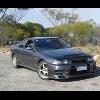Preloading Springs On Coilovers
Announcements
-
Similar Content
-
Latest Posts
-
Low battery? Maybe check capacity? I know first-hand, on BMWs if your battery drops below 80% capacity, it starts causing strange issues.
-
8.5 +37 = should fit rear, but I think it'll hit on front. What you want is low 30s/high 20's front, mid 30's rear. That 17" screenshot you posted looks good, I'd run it on my R32 (but that's long dead now). For tyre sizes, my rule of thumb is: 8': 235, 9": 255. But that's just my opinion. Nismo sizes: 18x8.5+35/18x9.5+38 is a good starting point.
-
Genuine is best. I have to replace my SIL's Audi A3 DRL module because the $20 alibaba special one has faded within a month... Sigh...
-
I owe you a lot, so will set aside R32 projectors for you. Once I get around to doing some retrofits lol. Posting it here so I can convince myself to stop talking shit and doing what I said I'll do. Not that you'll need them lmao.
-




Recommended Posts
Create an account or sign in to comment
You need to be a member in order to leave a comment
Create an account
Sign up for a new account in our community. It's easy!
Register a new accountSign in
Already have an account? Sign in here.
Sign In Now